After 15 games of the 2023 K League 1 season, Ulsan Hyundai have opened up an emphatic 11-point lead at the top of the table. Hong Myung-bo’s team have achieved this by winning 12, drawing two and losing just one of those opening 15.
Their 54-year-old manager is experienced but has led a unique life in football management since entering the profession shortly after his 2004 retirement from playing. In 2005, he joined Dick Advocaat as an assistant for the South Korean national team, snatching an opportunity to learn from a former Eredivisie (1996/97 with PSV) and Scottish Premiership (1998/99 and 1999/00 with Rangers) winner.
‘The Eternal Libero’, as the South Korean football legend was nicknamed during his playing days, remained in his role with Advocaat’s successor, Pim Verbeek, before going on to manage his nation’s U20s (2009), U23s (2009-2013), the senior men’s side on two occasions (2012 and 2013-2014) and even serving as their secretary-general (2017-2020).
The iconic defender’s only experience of club management, outside of Ulsan Hyundai, was with Chinese club Hangzhou Greentown (now-renamed Zhejiang) in what was a fairly unremarkable 43-game tenure from 2015-2017.
However, in his first club management role in his native South Korea with Ulsan Hyundai, where he’s been in charge since 2021, accumulating a stellar 62% win percentage, Hong delivered the 2022 K League 1 title — the Tigers’ first league triumph since 2005 and just the third in their history.
The club from South Korea’s eighth-largest city have started the 2023 campaign as they finished 2022 and look like threatening to repeat their success of last term, earning their first-ever back-to-back league titles, though we shouldn’t jump the gun as it’s still very early days in the grand scheme of things.
Still, excitement is in the air for the Ulsan Hyundai faithful who will be well and truly behind the Eternal Libero in the Tigers’ hot seat following a commanding start to 2023.
The Tigers’ attack has been the driving force behind the impressive way in which they’ve kicked off the campaign, as they’ve managed to bag 32 goals in their first 15 games — the most of any K League 1 side so far, with 19.33 being the league average. Ulsan Hyundai have also generated the highest xG (26.57) and highest xG per shot (0.141) of any team in South Korea’s top flight.
Our tactical analysis piece provides an analysis of why Ulsan Hyundai’s attack has been so lethal this term, breaking down their style of play, strategy and tactics in each distinctive phase of the possession game to look at what really makes them tick going forward.
Build-up
We’ll kick off this analysis by looking at Ulsan Hyundai’s build-up play. Firstly, Hong has lined his team up in a 4-2-3-1 shape for the vast majority of the campaign. We’ll observe how this shape changes and morphs as the Tigers progress through the phases of possession play as this analysis progresses.
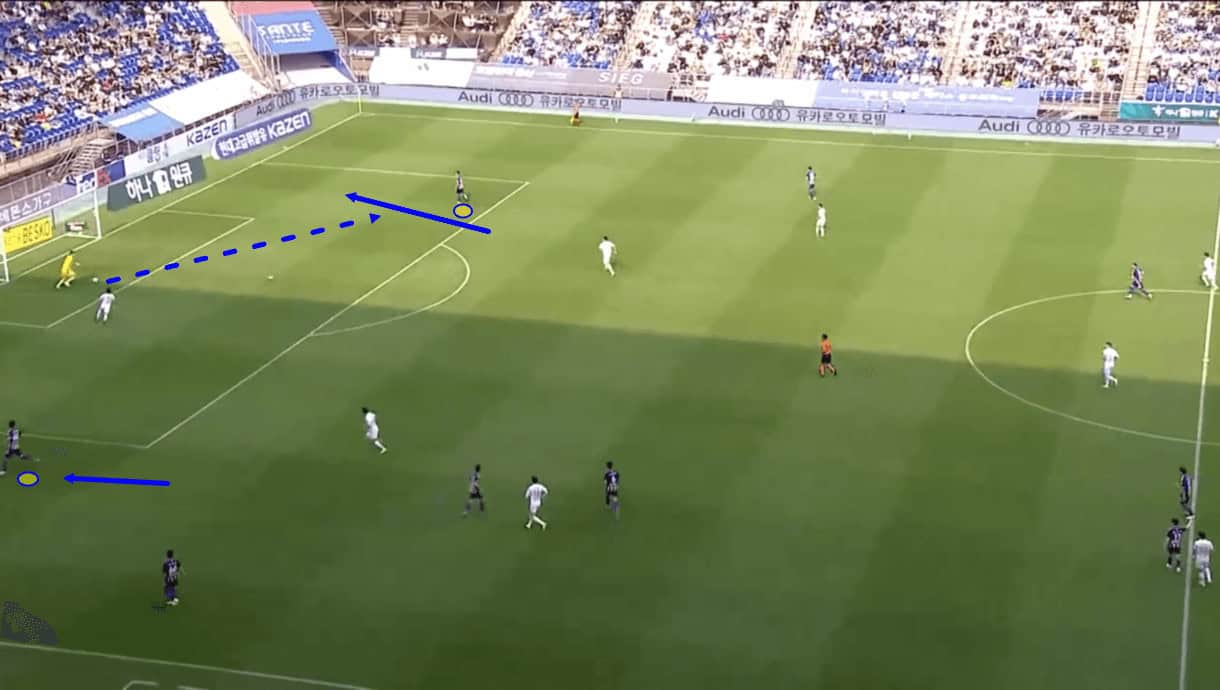
In the build-up, the Tigers’ centre-backs typically drop wide and deep, alongside the goalkeeper. From here, the keeper can normally find a pass to one of them as the opposition struggle to cut off both passing options. If the short pass really is unavailable, the keeper has the license to go long — normally to the centre-forward, 183cm/6’0” Joo Min-kyu.
Here in Figure 1, the goalkeeper, South Korean international Jo Hyeon-woo, played the ball to his left centre-back as the right centre-back was cut off by the opposition forward’s press. While another opponent tried to retain access to the left centre-back, the pass was still on and Jo duly took the option.
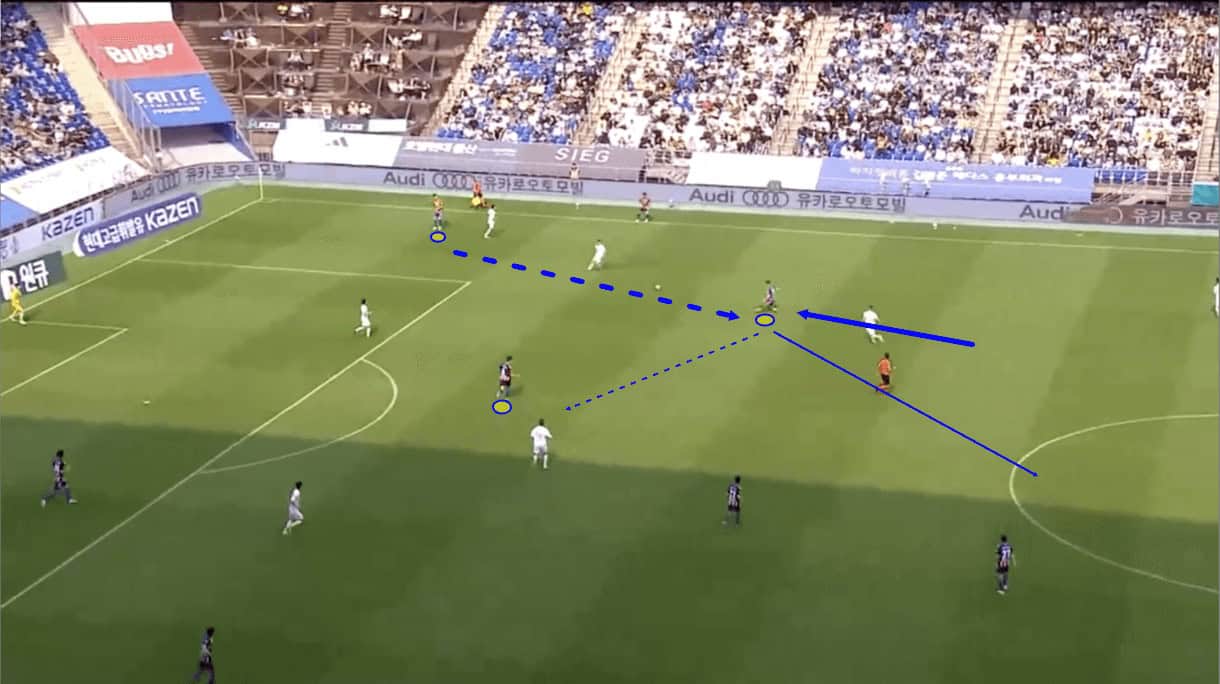
As we move on into Figure 2, we see how the left centre-back was able to receive, turn and find a decent forward pass to the left holding midfielder who dropped to provide an option. After receiving himself, the holding midfielder has two decent options: he can play the ball inside to his holding midfield partner who’s formed a triangle with him and the left centre-back or he can take the ball on the half-turn and try to beat his marker with a dribble. As play progresses, we see that he ends up choosing the latter and pulls it off quite well.
Ulsan Hyundai’s centre-backs drop deep on either side of the goalkeeper in order to provide a decent, safe passing option for the keeper, firstly. They have kept the highest amount of possession (58.1%) in South Korea’s top flight this term and like to try and build out from the back with security and a decent level of patience, prioritising finding the right man with the right pass over getting it forward as quickly as possible. It’s Hong and his team’s work on the training ground that helps them to achieve this quite quickly, making Ulsan Hyundai’s possession play something quite attractive to watch.
Secondly, another major reason why Ulsan Hyundai like to build their attacks like this is that they want to draw the opposition’s press high so that they create space for their attackers further upfield. In Figure 2 above, we see six opposition bodies dragged very high up the pitch — almost all positioned in Ulsan Hyundai’s own third. This leaves just the back four protecting the other two-thirds of the pitch, which is quite a lot of space for the Tigers’ eagle-eyed passers and cold-blooded forwards to target and attack.
In this case, after the receiver takes the ball on the half-turn and dribbles beyond his marker, he’s got a free run at the backline with support from offensive teammates. All of this is a direct result of Ulsan Hyundai’s decision to draw the opposition high with the initial build-up, taking a risk by playing around with the ball so close to their own goal but nullifying the risk with their preparation for this play and the quality of their keeper and centre-backs on the ball. That’s why they can pull off this type of move so often while keeping success rates high.
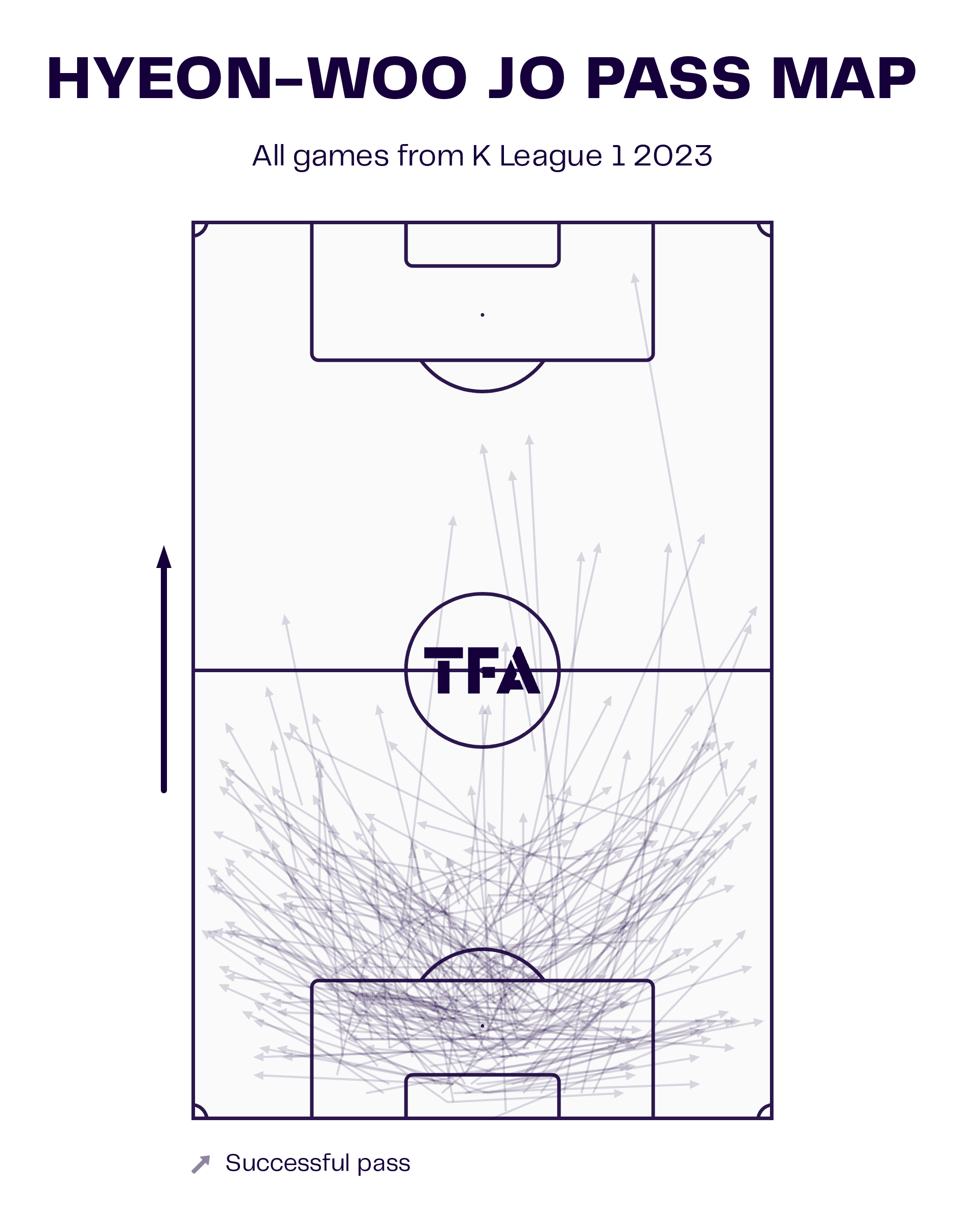
To close out this section, Figure 3 shows keeper Jo’s pass map for the 2023 season so far. We see plenty of balls played out to the sides where the centre-backs position themselves and some balls going long towards the centre-forward as previously explained, but far fewer than those that move closer to the goal — a result of Hong’s intended style of play with the Tigers.
Ball progression
Moving on into our next section, we’ll discuss Ulsan Hyundai’s ball progression phase. No K League 1 team has played as many progressive passes (74.83 per 90) or had as much progressive pass success (75.9%) as Ulsan Hyundai this term. They dominate possession but take plenty of risks at appropriate times to drive their team forward into dangerous positions.
We saw one example of this in Figure 2, above, with the left centre-back helping his team to progress beyond the opposition’s first line of pressure and into midfield, where the left holding midfielder had a choice to make on how he wanted to help his team get forward from there.
The triangle we see there with the centre-back and two holding midfielders is typical of Hong’s side; he loves to see his team naturally making lots of triangles to ease their safe but quick passing play and progression through the thirds. They can be very difficult to defend against when passing their way upfield thanks to this approach.
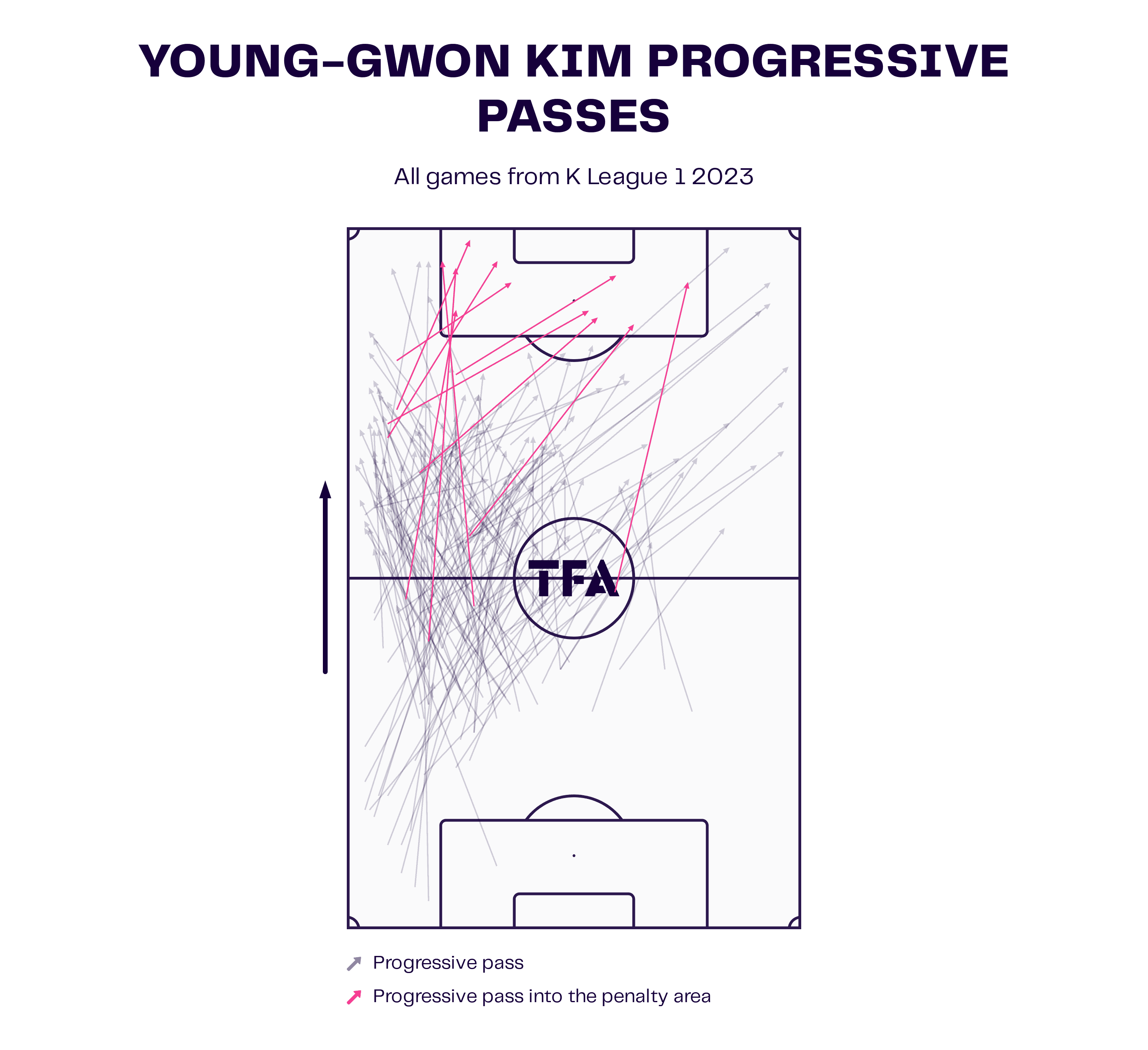
Kim Young-Gwon has started at left centre-back in all of Ulsan Hyundai’s league games so far this season and he’s been immense in terms of ball progression. The 2015 South Korean footballer of the year has made a staggering 13.63 progressive passes per 90 with 84.91% accuracy, highlighting his impact and contribution to his side’s ball progression.
Figure 4 shows Kim’s progressive pass map from 2023 and displays the types of areas he typically plays the ball into. Many of his progressive passes get driven down the left-hand side in search of runners just ahead of him while plenty also go across the field for teammates on the opposite wing to make use of, though far fewer make it to these areas.
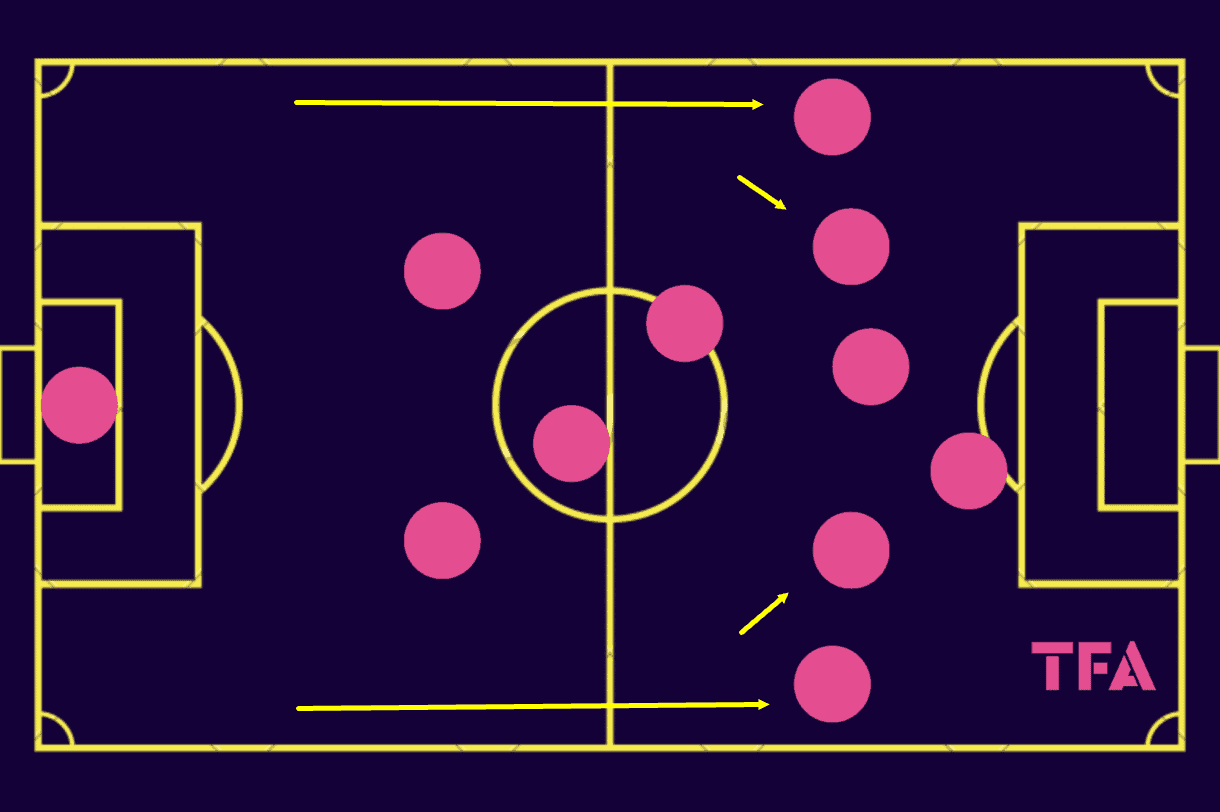
In the progression phase, the Tigers’ shape generally appears as seen in Figure 5. The wingers come inside, as the full-backs advance to provide the width on either side of the attack, giving Hong’s side something of a 2-2-6 shape (or even 2-1-1-6 with how the holding midfielders stagger themselves centrally).
As the wingers come narrow, they — along with the ‘10’ and centre-forward — can become a problem for the opposition’s backline to deal with. Against a back-four, in particular, this narrow front four can go man for man with the opposition’s back four, with the wingers pinning the opposition’s full-backs more centrally. As a result, the full-backs may enjoy a lot of space to work with on the wing where they can receive and cause problems in the final third.
Going back to Figure 4, we see plenty of Kim’s progressive passes moving out to the left wing as this is generally a natural pass for the left-sided centre-back to play but the Tigers can really make the most of this by exploiting a lot of space in threatening areas down that left wing.
If the opposition full-back comes out to mark the Ulsan Hyundai width provider, however, Kim can also be a major threat through a more central pass into the now-potentially free winger in the left half-space. We see plenty of Kim’s passes moving into this zone as well, and the fact he’s a left-footed left centre-back helps make these passing angles even more prevalent.
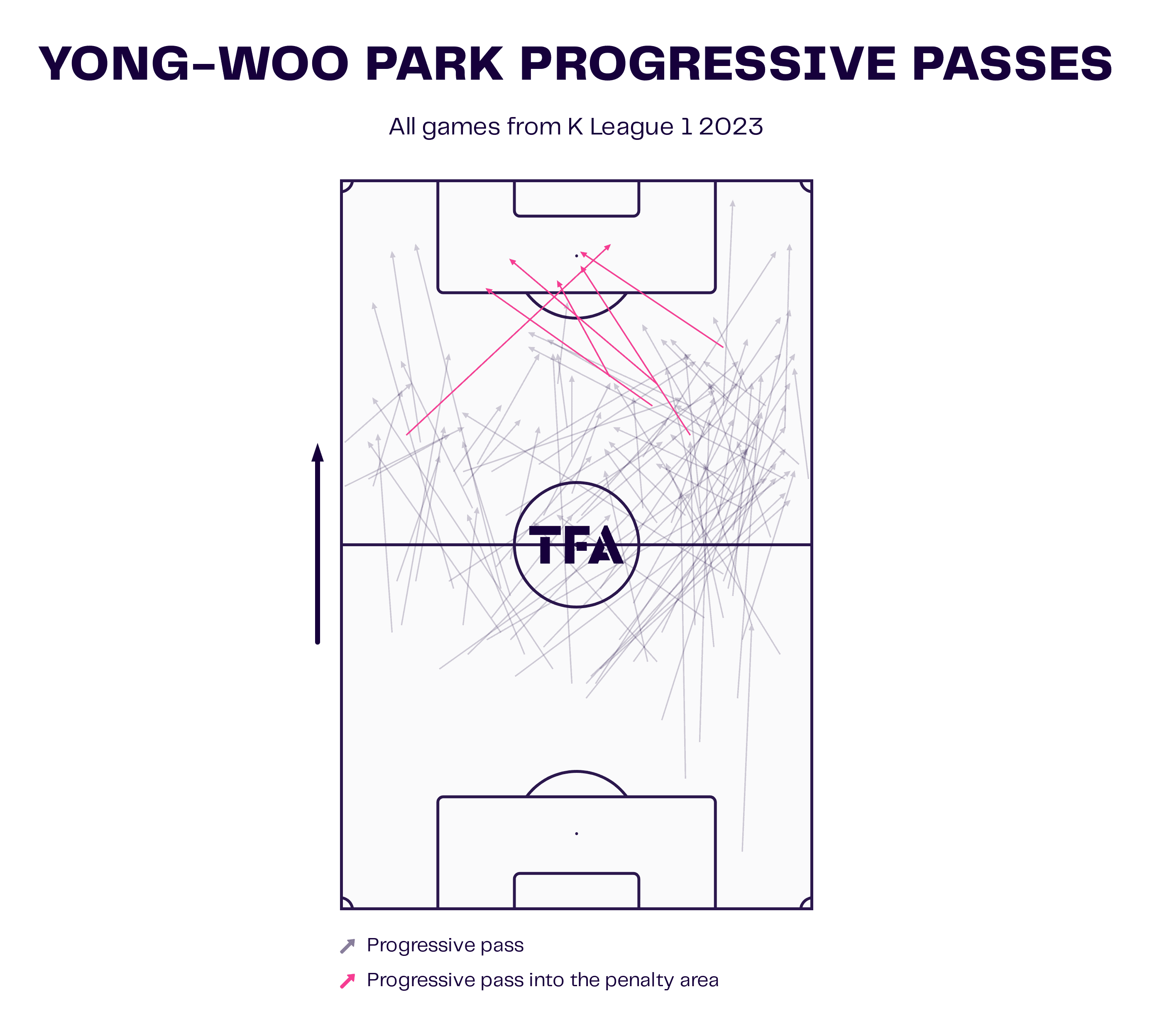
Right holding midfielder Park Yong-woo is also a great asset for his side in the progression phase, performing similarly to Kim on the left in terms of how he helps his side to exploit the space that forms for the near-sided full-back.
Park often positions himself deeper than his midfield partner and sometimes takes up a more central position as we see in Figure 4 and as the origin areas in his progressive pass map from Figure 6 suggest.
Ulsan Hyundai are a very possession-based side, as previously mentioned. They are comfortable camping themselves inside the opposition’s half for a bit as they search for the right opening to break the opponent down. They are frequent and accurate with their progressive passing but take more risks when it comes to breaking the last line, which Park is often responsible for even when coming from deep.
He’s a good asset in defensive transitions as his positioning and defensive technique can help his team shut down opponents’ attempted counterattacks before he gets on the ball and tries to help his team kickstart a counter of their own from a dangerous position.
Additionally, when camped inside the opposition’s half in possession, Ulsan Hyundai can force the opposition’s midfielders back to support the backline that’s being pinned centrally. This can create space for Park to exploit in the middle third and the edge of the final third, which he often does.
So, whether it’s dropping to receive from the centre-backs in build-up or advancing to provide an option just on the edge of the final third, Park makes a significant contribution to his team when seeking to break lines.
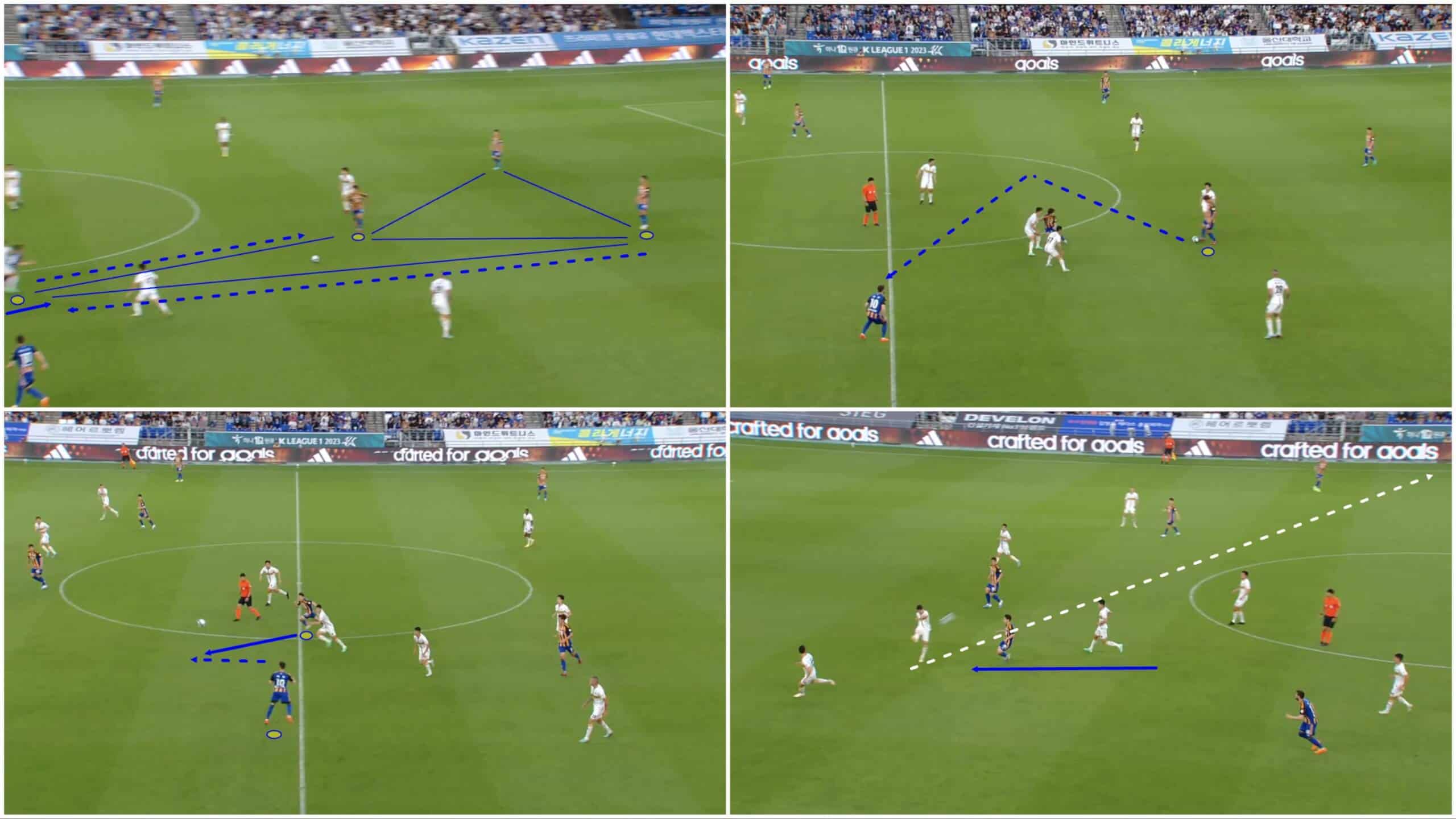
Figure 7 shows an in-game example of Ulsan Hyundai’s progression play, featuring Park’s contribution from his holding midfield position.
Initially, he moved centrally, in between the two centre-backs, while his midfield partner was positioned higher — a systematic feature of Ulsan Hyundai’s play in this phase.
The ball was played from the left centre-back to the left-sided midfielder, with Hong undoubtedly encouraging his side to use the longest possible forward pass that’s on as opposed to the shorter pass. As the left holding midfielder receives, he quickly finds Park centrally and facing forward. This means Park can quickly send the ball forward himself with a full view of the pitch ahead of him as he gets on the ball.
Park plays the pass over the opposition for the left-winger to receive and nod the ball on for the left holding midfielder — now making a surging run forward — to meet in the opposition’s half and continue the attack.
Unfortunately for Hong’s men, this attack was thwarted by the opposition’s centre-back as the final section of Figure 7 shows. However, this provides a textbook example of Ulsan Hyundai’s approach to ball progression, which has been very successful for the team this season.
Chance creation
Now, moving on to the chance creation phase, we can elaborate on a few points we touched on in the previous section.
Firstly, as you might have gathered following our discussion about the full-backs’ positioning in the progression phase, these men play a vital role in the Tigers’ chance creation this term, especially left-back Lee Myung-jae, who’s played the most crosses (5.22 per 90) of any K League 1 left-back this term while generating the highest xA (2.52) of any full-back (right or left) in South Korea’s top flight this season.
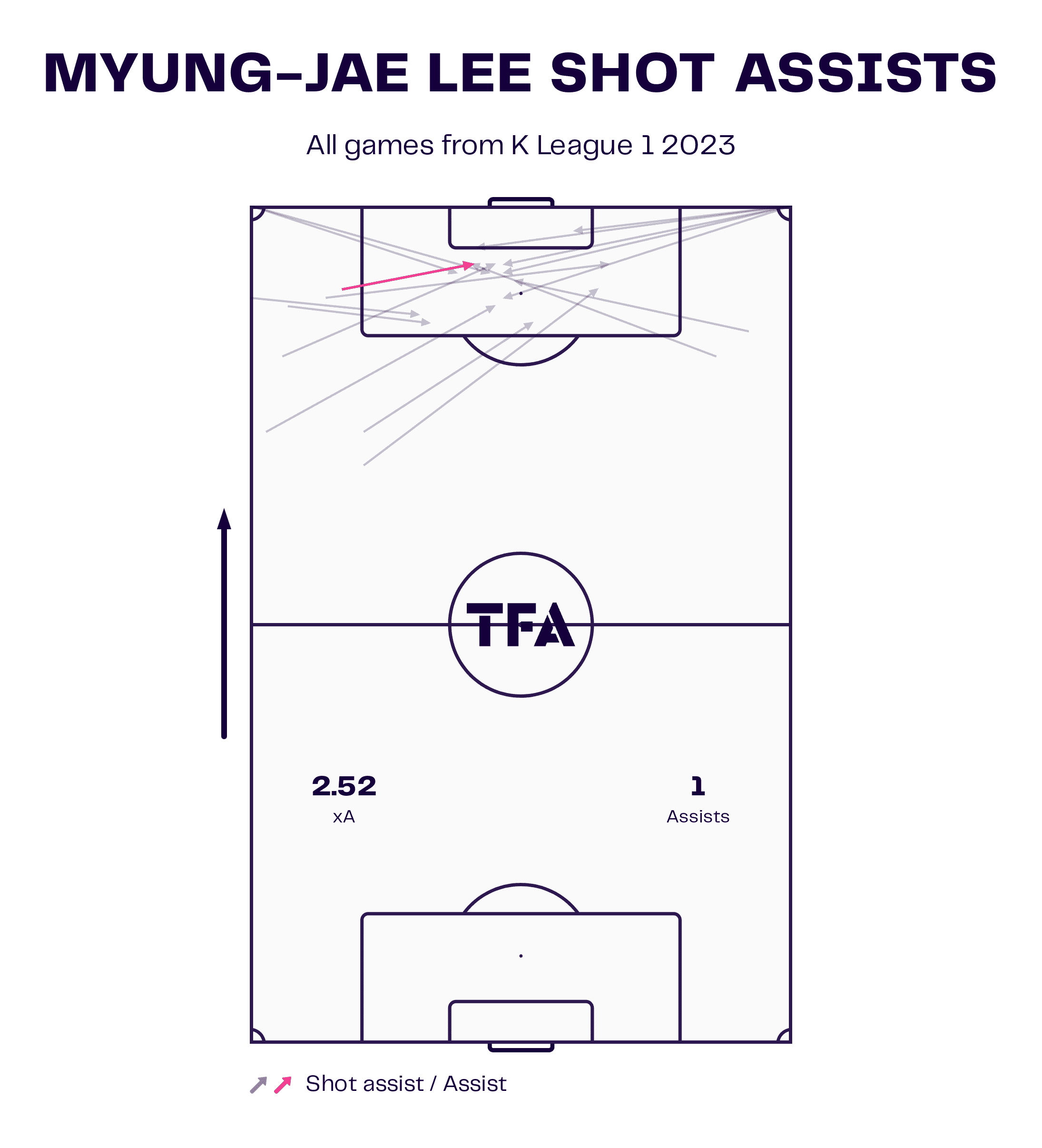
Figure 8 displays the 29-year-old left-back’s shot assists map from 2023 — and we can see that corner-taking has inflated his xA numbers to an extent, but there are still a lot of crosses from open play leading to shots, especially from deeper areas.
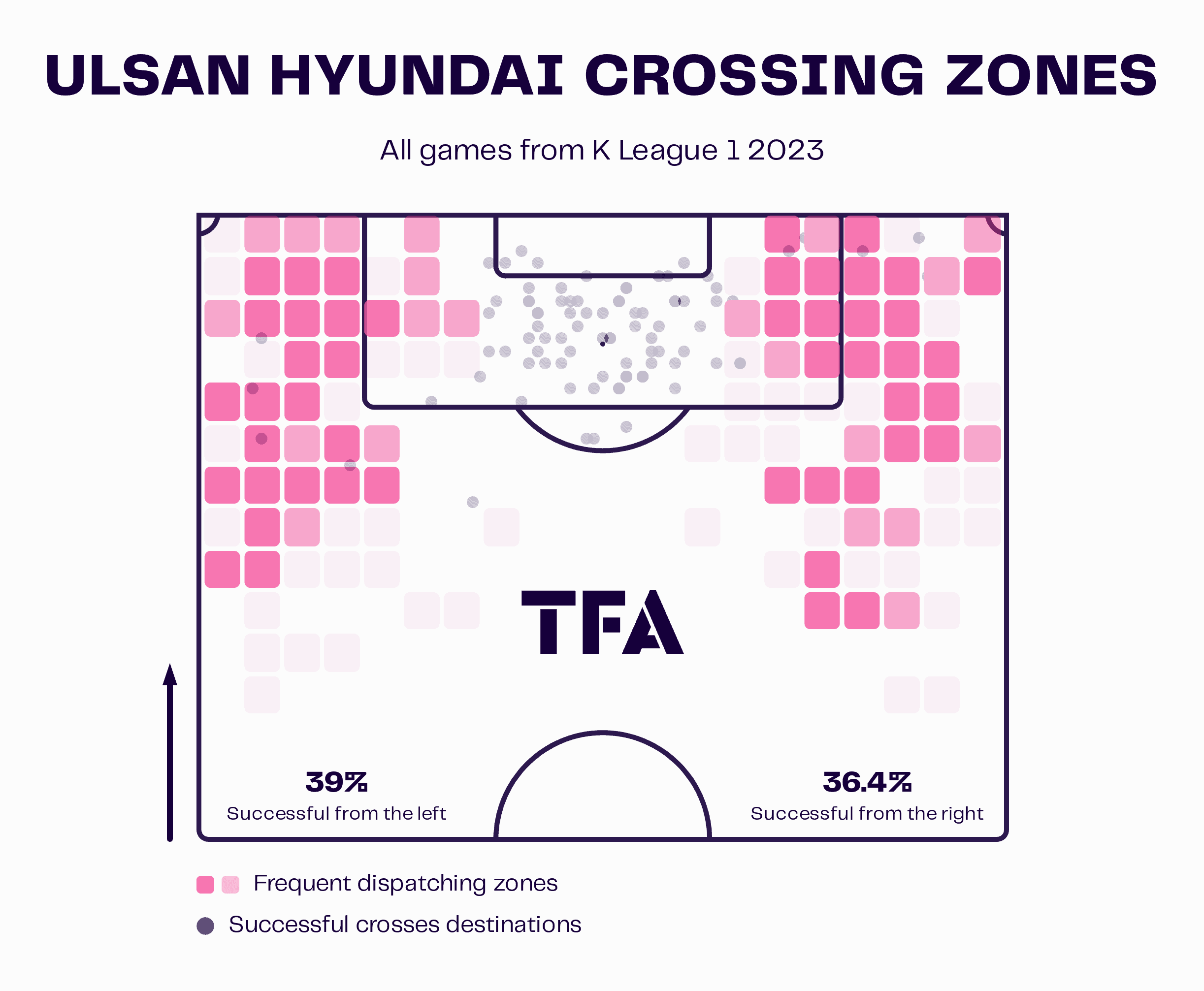
Hong typically likes his team crossing early and from deep. Of course, plenty of the Tigers’ crosses also come from higher upfield, for example, just on the edge of the area from where low-driven crosses into the penalty area can be especially dangerous.
However, the 54-year-old manager likes to see his side trying to catch the opposition out with early balls into the box and high crosses for the players inside the danger zone to attack.
Their crossing has been especially successful from the left this term (39%) than the right which can partially be attributed to Lee’s contribution.
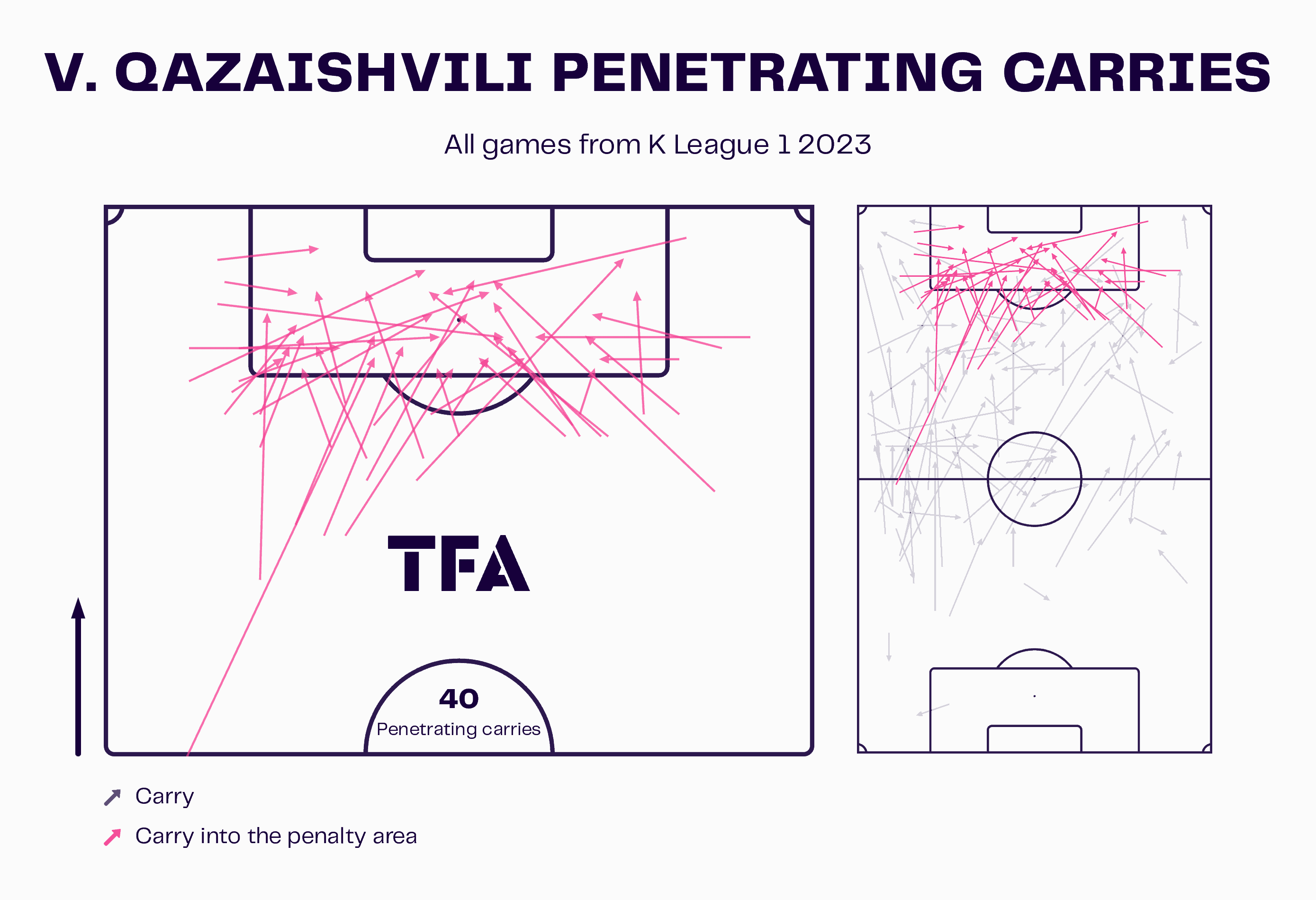
Meanwhile, Ulsan Hyundai’s wingers also have a lot to contribute in the chance creation phase. As mentioned, these players will typically be positioned in the half-spaces, and they can be found in these positions by the centre-backs and holding midfielders should the opposition full-back give them some space while getting occupied by other Tigers players.
Valeri Qazaishvili has been effective on the left wing for Hong’s side this season, with Figure 10 presenting his penetrating carries map from 2023. A lot of those carries unsurprisingly begin in the half-space; from there, the Georgian winger can progress into the box, often beyond the opposition’s backline, and into a good shooting position.
The 30-year-old has made the most dribbles (5.41 per 90) of any Ulsan Hyundai player this term while maintaining a decent 55% success rate; this distinguishes the prominence of his dribbling game.
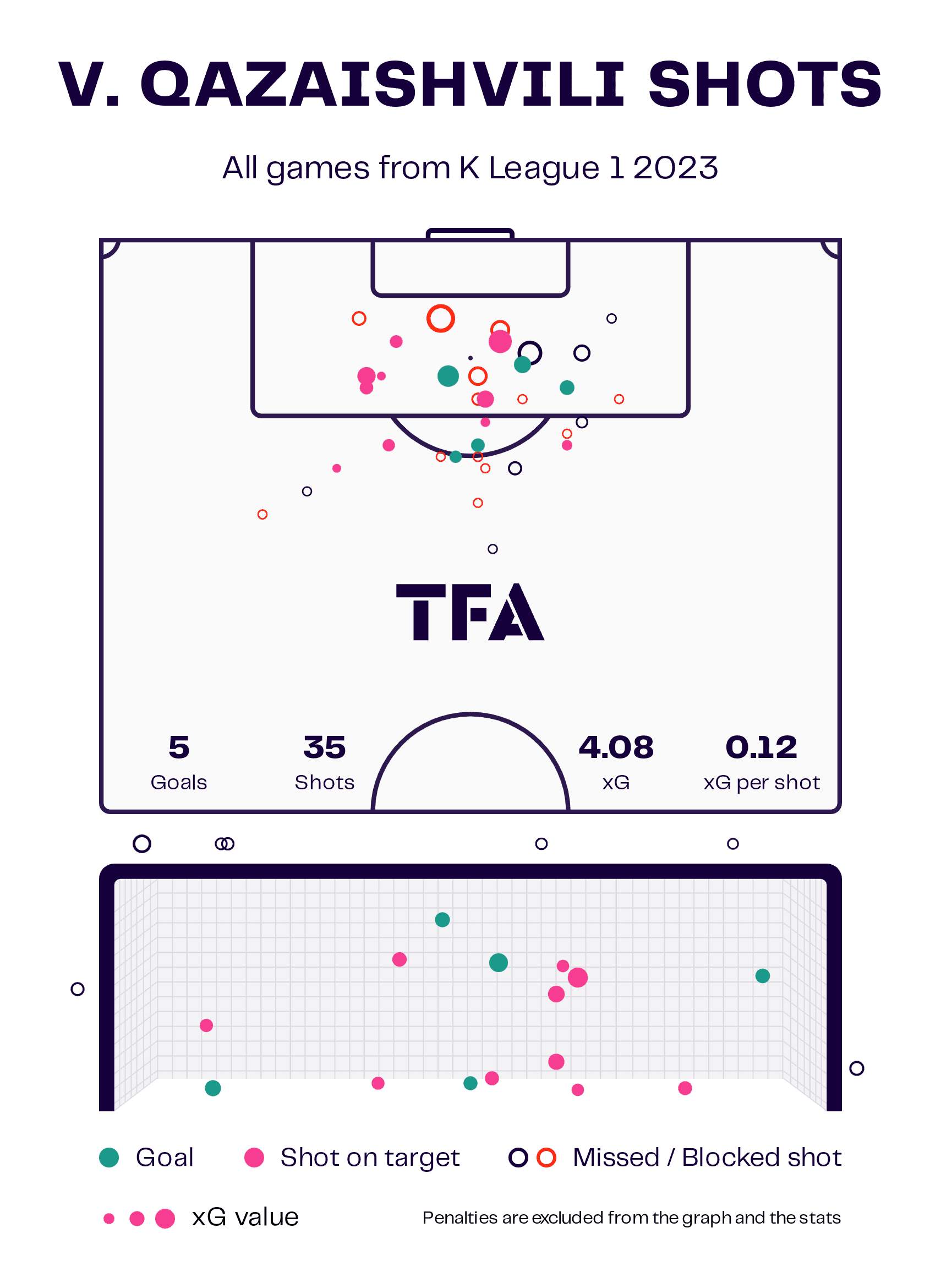
Qazaishvili has taken the most shots (3.15 per 90) of any Tigers player this term. As the shot map above indicates, he does sometimes shoot from less-than-optimal positions but he retains a shot accuracy rate of 42.86%, which is very respectable.
A lot of the credit for Qazaishvili generating so many shots is due to his team’s setup in the progression phase and his ball-carrying ability — as his deeper teammates find him in the half-space, he can receive, turn and carry the ball into a threatening area.
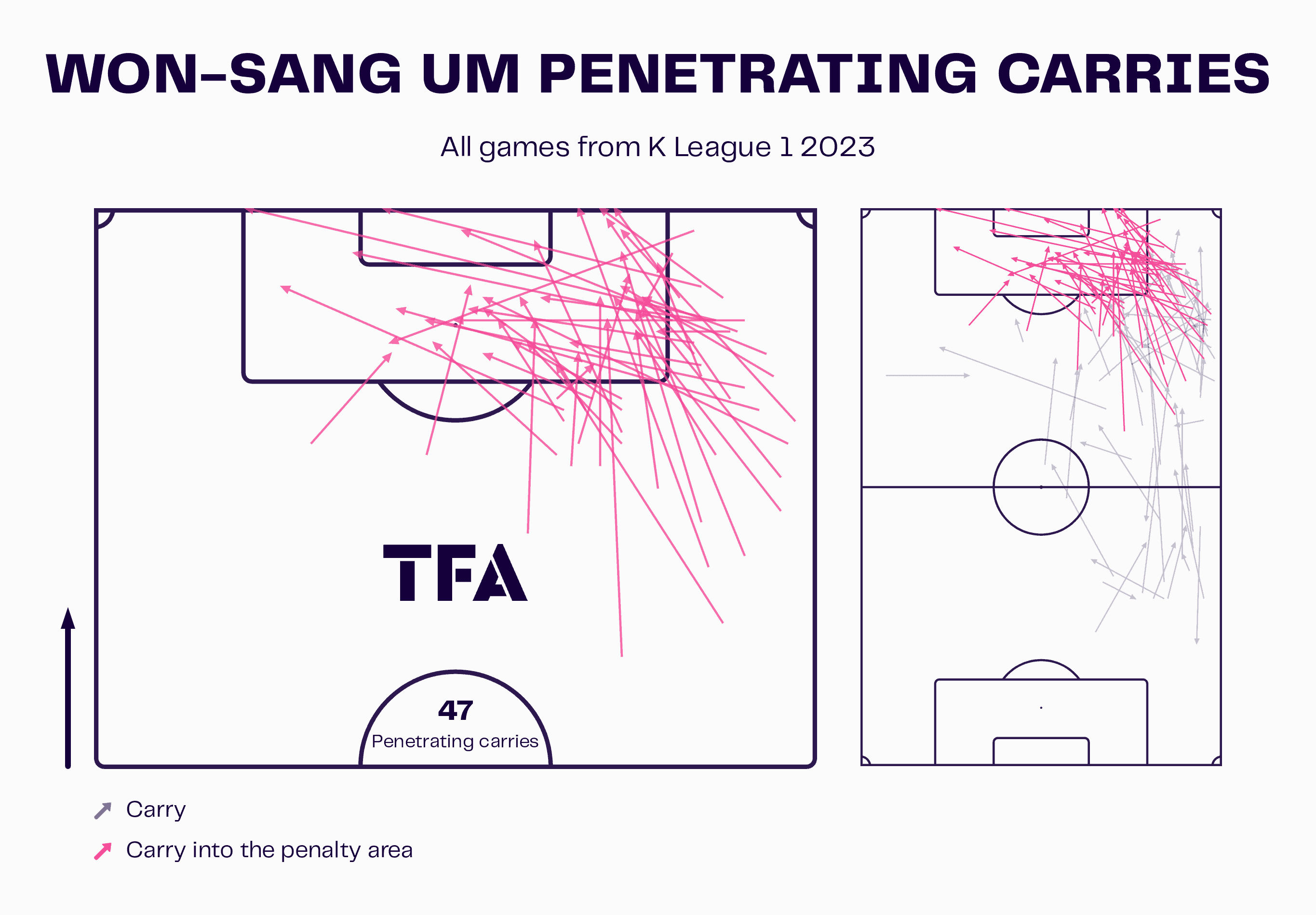
Um Won-sang often plays on the right for Hong’s side and his penetrating carries map reads somewhat similar to Qazaishvili’s, though with more of his dribbles starting slightly wider. Still, we see plenty of carries originating in the half-space and it’s clear that like his left-sided counterpart, the 24-year-old is good at progressing his team into threatening areas after receiving in the final third.
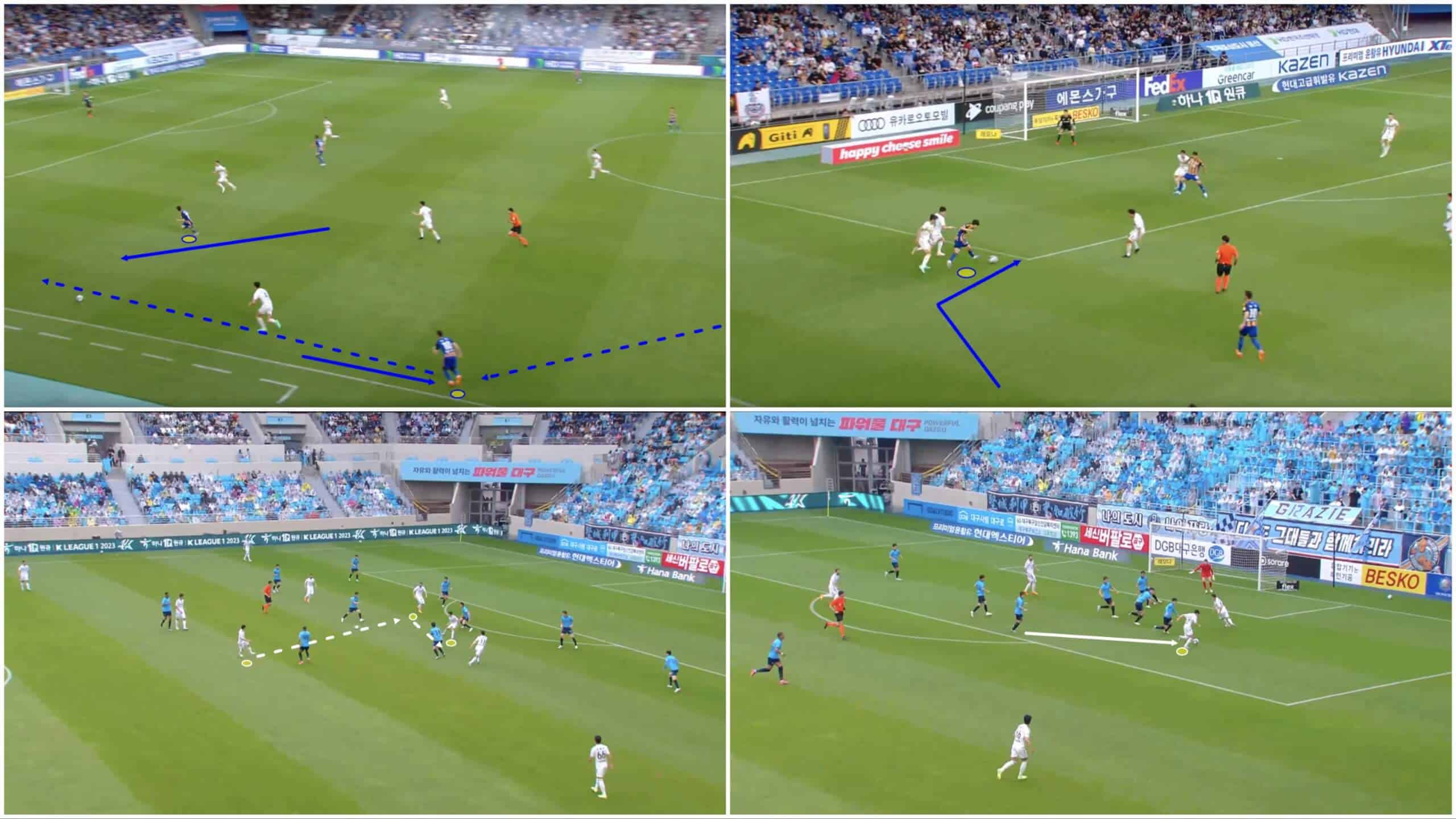
The attacking midfielder is also required to thrive as a dribbler within Hong’s Ulsan Hyundai system. In transition, the ‘10’ can be extremely important for helping his team get into the final third, and his movement varies quite a bit.
Rather than remaining central, the ‘10’ drifts out into wide areas quite a lot on the counter, at times when the wingers are not occupying those positions due to having just been back defending. We see an example of attacking midfielder Hwang Jae-hwan performing this role as his side attempts to break down the opposition on the counter in the top half of Figure 13.
Hwang is a proficient dribbler with good close control and decent pace on the ball; after he received on the left wing here, he successfully beat a couple of defenders, progressing into the penalty area where he could go on to link up with the centre-forward with his back to goal, holding off a centre-back.
The bottom half of Figure 10 provides an example of the attacking midfielder’s role in a more settled period of possession — an important phase for Ulsan Hyundai who like to set up for periods of possession inside the opposition’s half. Again, Hwang plays the role of the Tigers’ ‘10’ in this instance.
The player’s off-the-ball movement is vital for finding a decent pocket of space in the congested central area around the box. He doesn’t receive the initial pass from the holding midfielder but is able to pick up a nice space next to the receiver where he can get on the end of the next pass and carry the ball into the penalty area, breaking lines in the process.
This carry doesn’t leave him in a great position but it’s still a dangerous area for a tricky dribbler to be in possession of the ball, so highlights how the attacking midfielder’s ball-carrying ability holds plenty of value for Hong and his team, helping them to generate more threat and split the opposition’s backline open.
So after the team’s setup in progression helps them to progress into a good position in the final third, crossing and ball-carrying become extremely important. Again, right holding midfielder Park is also an asset from a slightly deeper position in this phase, as he can receive in space deeper when the opposition’s midfield is forced back to slide the ball through and cut the defence open as well.
Hong’s men have a lot of ways they can hurt you in the final third and all have been utilised to great effect this season, leaving little wonder why they’ve been so prolific going forward.
Centre-forward positioning and movement
Last but not least, our analysis will look at the role of the centre-forward within Hong’s system. This is a tactical analysis of the team’s attack and while there are many components that come together to create the beast that has been Ulsan Hyundai’s attack in K League 1 this season, you still always need a killer up front who can put away the chances they create.
Joo Min-kyu has been the Tigers’ main killer this season, bagging eight goals in 14 league fixtures so far. The 33-year-old is a 183cm/6’0” right-footed centre-forward who provides a bit of an aerial threat but mostly functions as a poacher inside the penalty area, finding a good space to occupy and pouncing on the ball as it arrives at his feet.
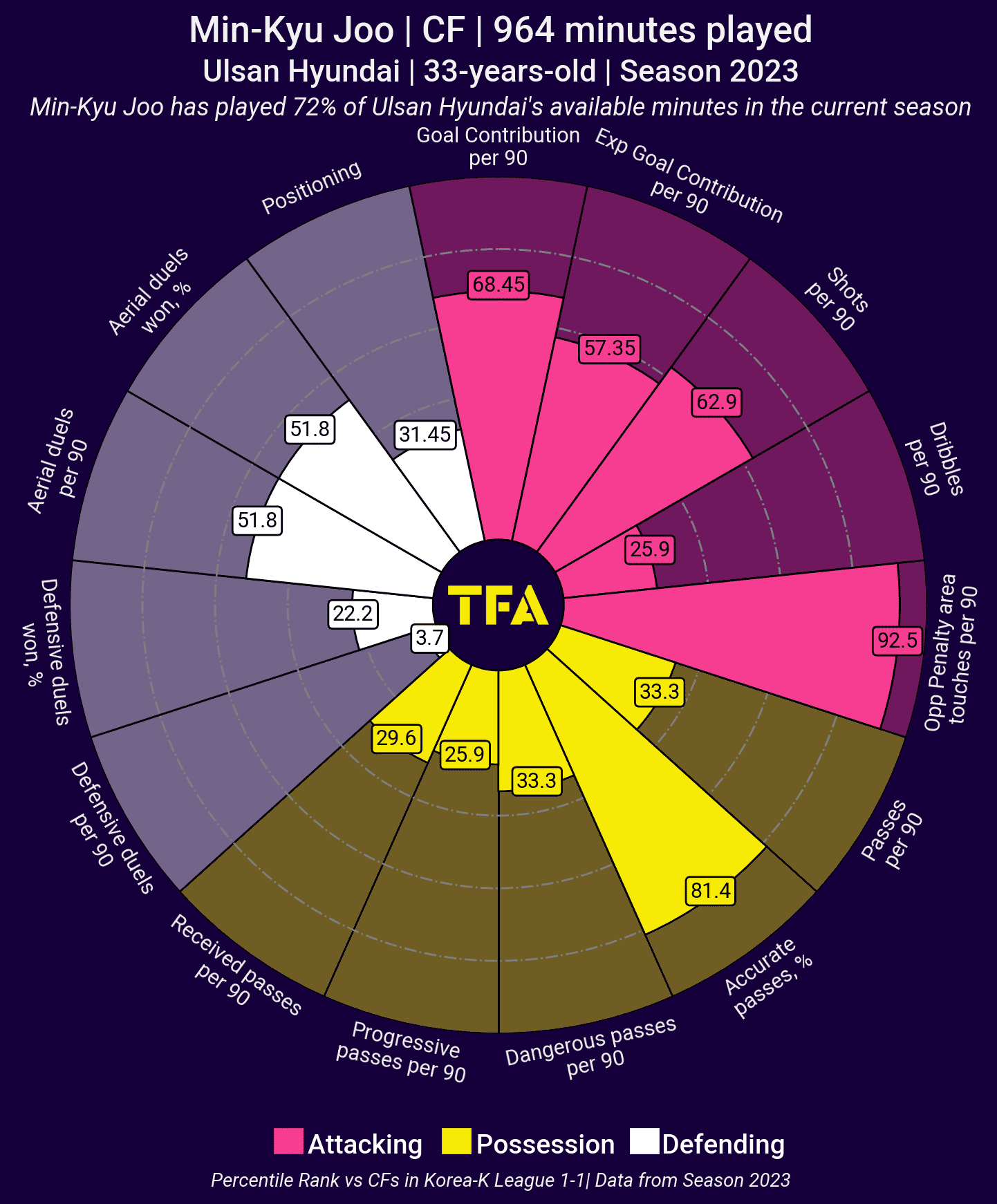
As the pizza chart in Figure 14 displays, Joo takes a relatively decent number of shots while providing an above-average number of goal contributions and expected goal contributions. He makes a lot of touches inside the penalty area, which is a symptom of his role in the chance creation phase, along with the possession statistics.
Joo isn’t in the team to be a creative outlet, rather he’s someone who can finish off chances when fed inside the area. However, he also provides help in the chance creation phase thanks to his hold-up play.
The 183cm forward is comfortable backing into defenders and playing while facing away from goal; his physicality and technical quality on the ball are important attributes that help him to perform this role effectively. He has to be comfortable under pressure, able to withstand a centre-back’s physical challenge, capable of picking out a sensible pass quite quickly and executing the pass with precision.
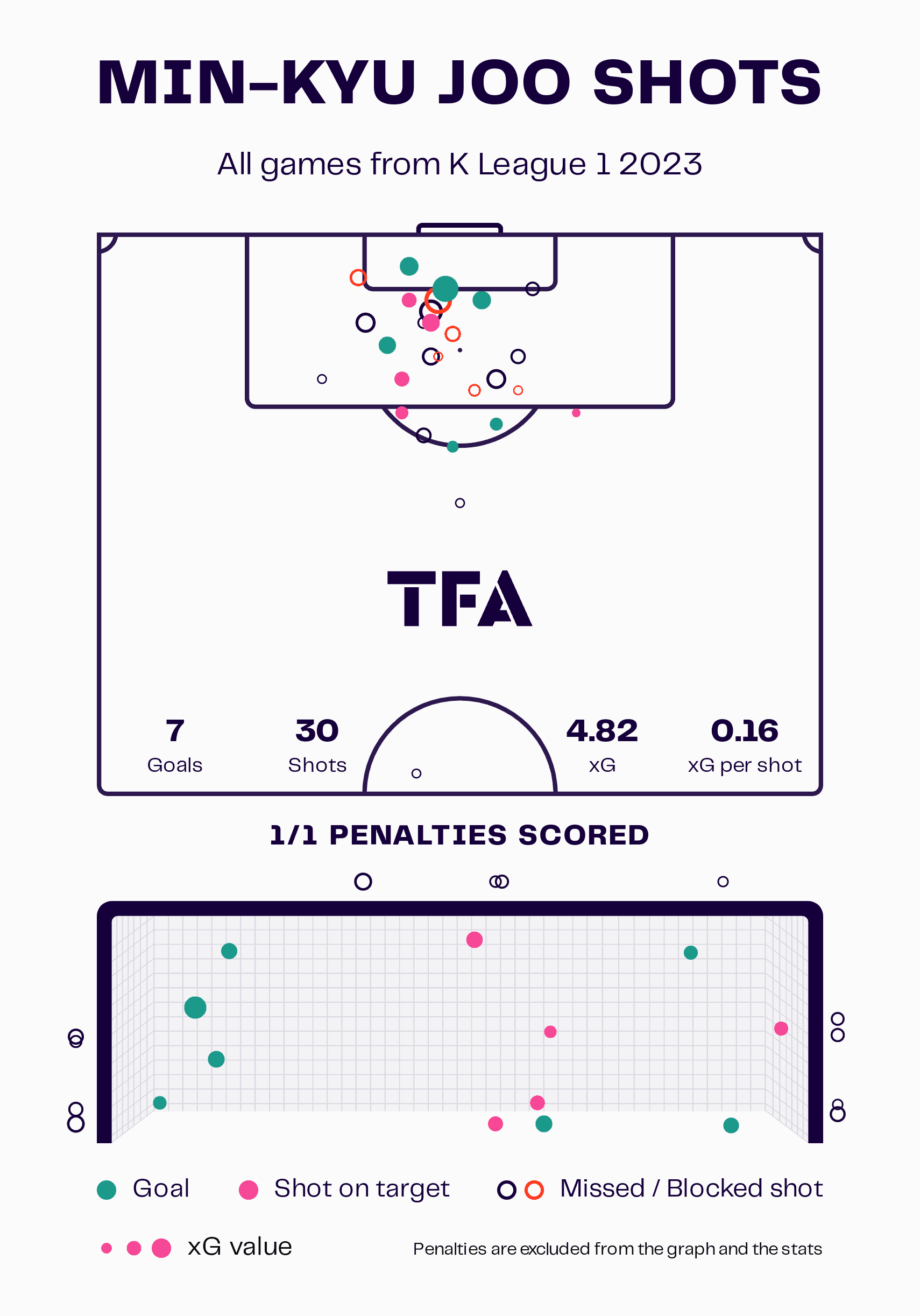
In terms of shooting, Joo has an attractive shot map indicating that he generally shoots from high-value positions. As we can see from the map, the vast majority of his shots come from within the width of the six-yard box and inside the penalty area. This is the area where the 33-year-old striker will typically be found and it’s an area from which shots are relatively likely to result in goals, so the map provides an indication of the attacker’s intelligent positioning; meanwhile, his 0.16 xG per shot is indicative of his intelligent shot selection.
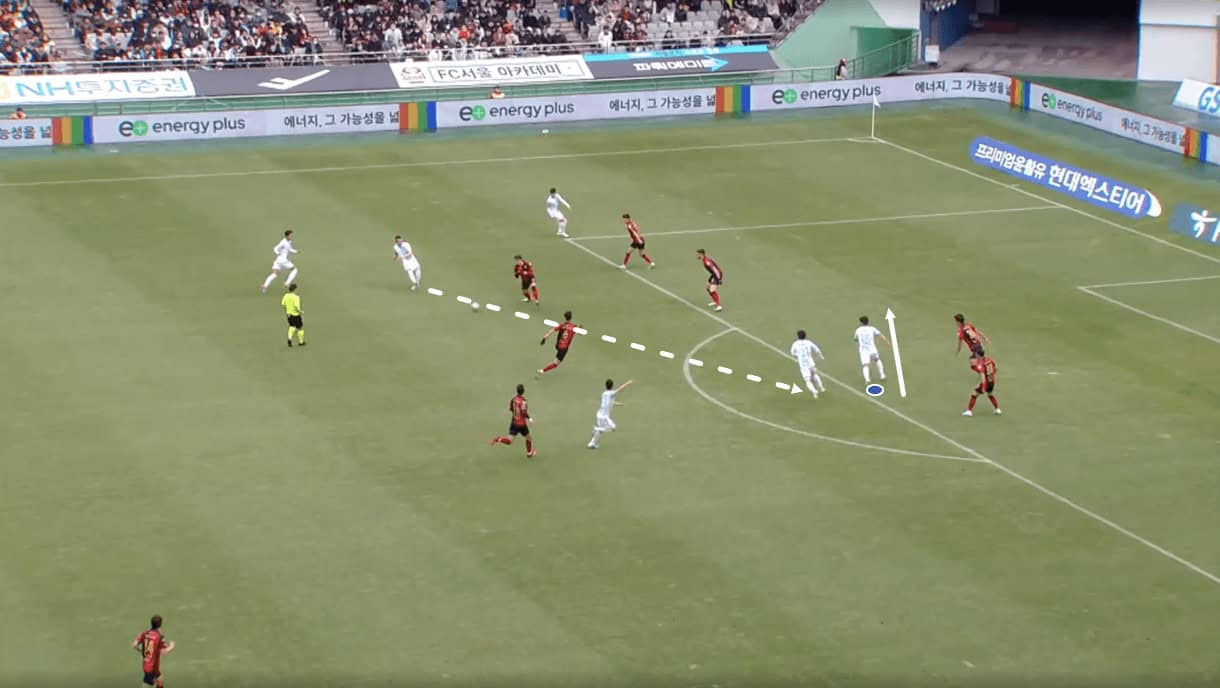
We see an example of Joo’s intelligent and effective movement in Figures 16-17. Firstly, we see the attacker highlighted just inside the box in the image above while his teammates progress the ball beyond the opposition’s midfield line and into the feet of an attacker at the edge of the area.
Joo makes his move targeting space behind the opposition’s right centre-back as this pass is played to the attacker at the edge of the box, noticing some room behind this player as the left centre-back was a notable amount deeper, leaving space for the striker to exploit.
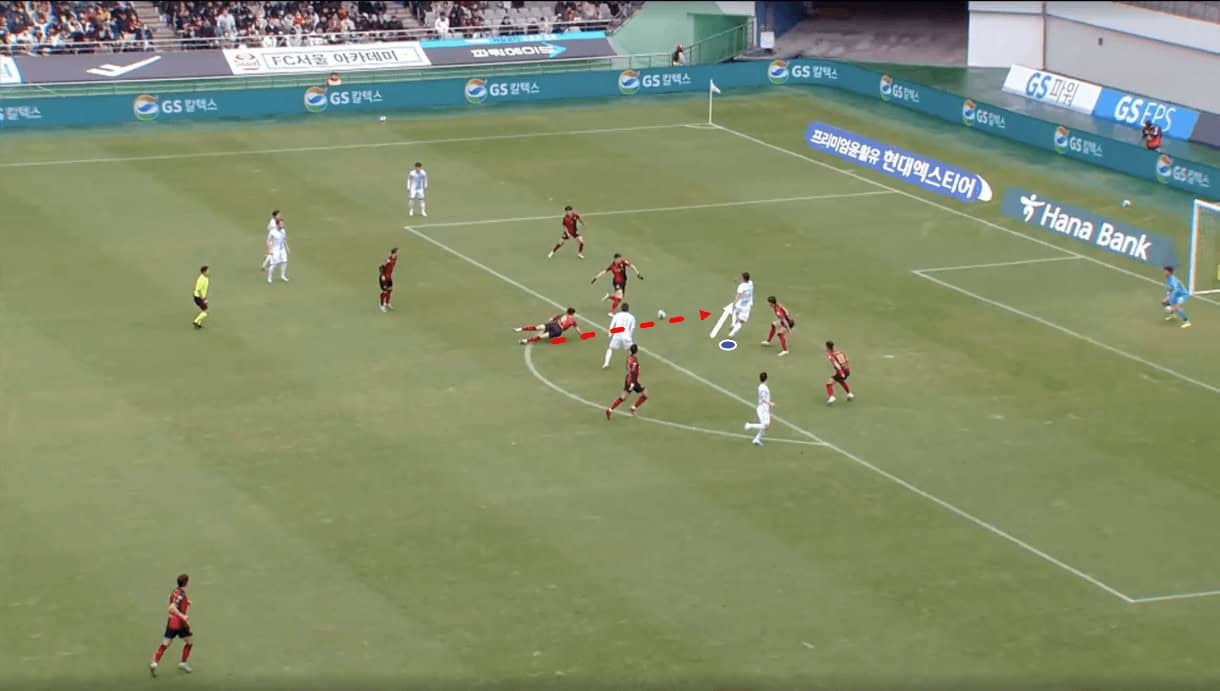
The opposition tried to intercept the pass but the player ended up just knocking it into Joo’s path behind the left centre-back. From here, the striker was able to shoot from a very valuable position — having been anticipating a ball into this area — and score a goal.
This is just an example of the kind of intelligent movement Joo has displayed for Hong’s side this term. Thanks to the aforementioned setup in chance creation, ball progression and build-up, along with the intelligent centre-forward play from Joo up top, Ulsan Hyundai have been a force to be reckoned with going forward, as the table suggests.
Conclusion
To conclude our tactical analysis, we hope it’s clear how and why Ulsan Hyundai have been so successful in attack under Hong Myung-bo this term (and last!). Should they keep playing at the level they are, the intelligent strategy and tactics on display should be a handful for all K League 1 teams to try and cope with. They’ve started the season very strong going forward and don’t look like slowing down any time soon, as their opponents are still coming to grips with how to deal with their multilayered offence.





Comments